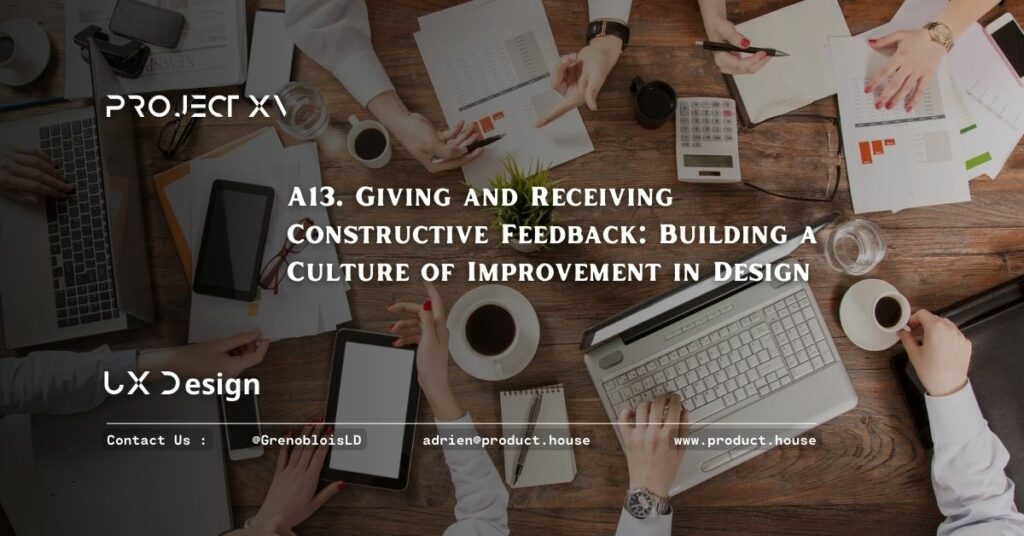A13. Giving and Receiving Constructive Feedback: Building a Culture of Improvement in Design

Providing and receiving constructive feedback is essential for building a culture of improvement in design. It involves communicating feedback effectively, listening actively, and using feedback to make informed decisions and improvements. In this article, we’ll explore the benefits of providing and receiving constructive feedback in design, and how it can enhance the design process.
Communication and Teamwork
Providing and receiving constructive feedback is essential for effective communication and teamwork in design. It involves sharing feedback and ideas effectively, listening actively, and working collaboratively to improve designs.
One of the key benefits of providing and receiving constructive feedback is that it can lead to more effective collaboration in the design process. By sharing feedback and ideas effectively, designers can identify and resolve issues more quickly, and work together to create designs that meet user needs and business goals.
Design Process
Providing and receiving constructive feedback is also essential for success in the design process. It involves using feedback to make informed decisions and improvements, and ensuring that the design meets user needs and business goals.
One of the key benefits of providing and receiving constructive feedback is that it can lead to more effective designs. By using feedback to make informed decisions and improvements, designers can create designs that are more effective and efficient, and that meet user needs and business goals more effectively.
Benefits of Providing and Receiving Constructive Feedback
Providing and receiving constructive feedback can have numerous benefits for designers and the design process. By communicating feedback effectively and working collaboratively to improve designs, designers can create designs that are more effective, efficient, and that meet user needs and business goals more effectively.
Additionally, providing and receiving constructive feedback can lead to greater job satisfaction and work-life balance. By creating a culture of improvement in design, designers can take pride in their work and enjoy the satisfaction of knowing that they are creating something of value.
Conclusion
In conclusion, providing and receiving constructive feedback is essential for building a culture of improvement in design. It involves communicating feedback effectively, listening actively, and using feedback to make informed decisions and improvements. Therefore, it’s important for designers to prioritize developing and mastering their skills in providing and receiving constructive feedback.




